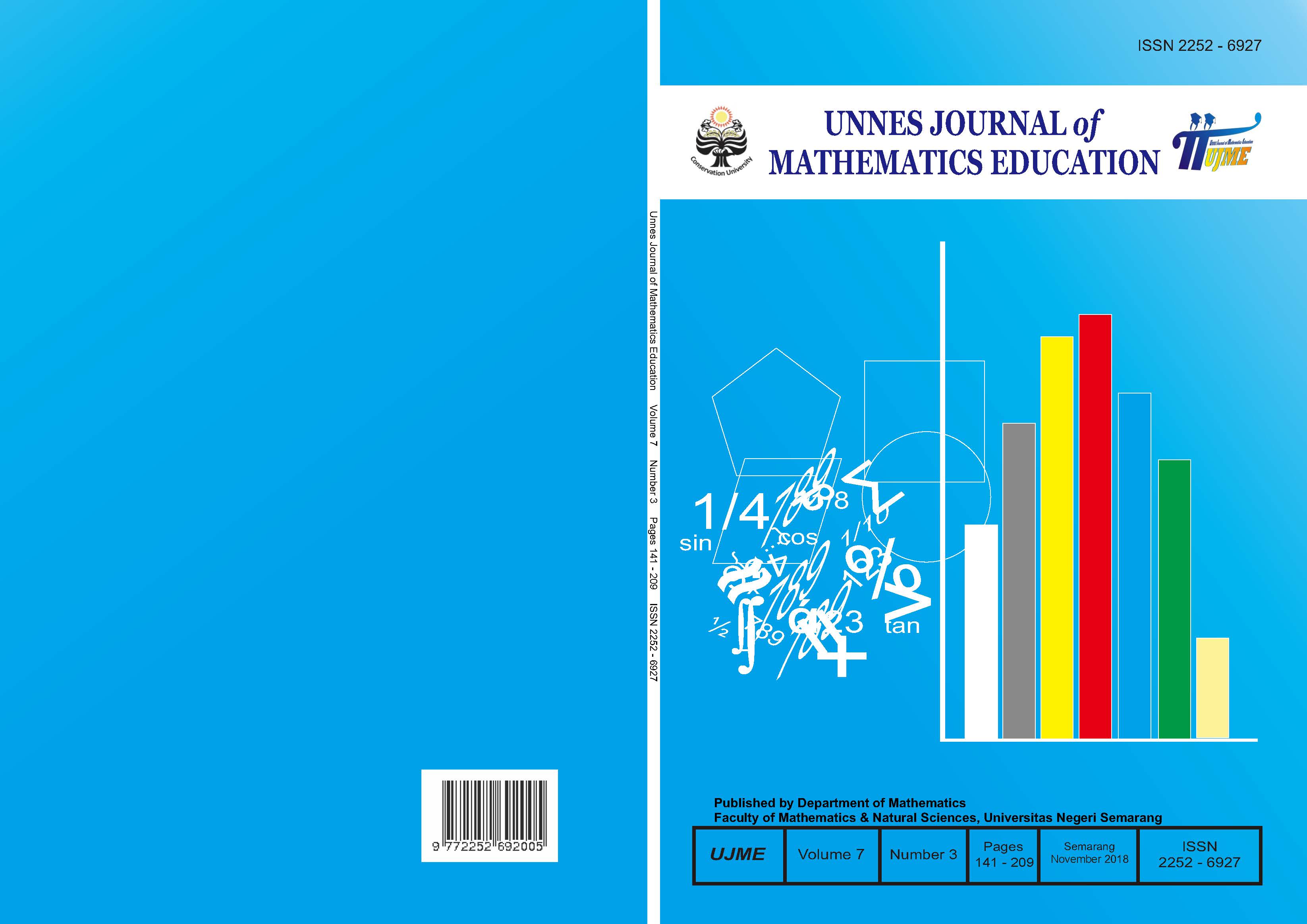Students’ mathematical creative thinking ability in creative problem solving learning based on self-esteem
##plugins.themes.academic_pro.article.main##
Abstract
The purpose of this study was to determine the improvement of students’ mathematical creative thinking ability and to describe students’ mathematical creative thinking ability based on self-esteem. The method used in this study was mixed methods. The population in this study were seventh grade students in one of the junior high school in Semarang City. Through simple random sampling, the reseachers chose class VII A as an experimental class. Futhermore, 6 study subjects were interviewed consisted, covering 3 subjects from high self-esteem level and 3 subjects from low self-esteem level. The results of this study were: (1) student’s mathematical creative thinking ability increased with a gain index of 0,4 and was included in medium level; (2) students with the high self-esteem level were categorized in level 4 of TBKM; and (3) students with the low self-esteem level were grouped in level 0 TBKM.
##plugins.themes.academic_pro.article.details##
References
Fadillah, S. 2012. Meningkatkan Self Esteem siswa SMP dalam Matematika melalui Pembelajaran dengan Pendekatan Open Ended. Jurnal Pendidikan MIPA, 13(1): 34-41.
Guindon, M. H. 2010. Self Esteem Across The Lifespan. New York: Routledge Taylor & Francis Group.
Hake, R. R. (1998). Interactive-engagement versus traditional methods: A six-thousand-student survey of mechanics test data for introductory physics courses. American journal of Physics, 66(1), 64-74.
Happy, N., & Widjajanti, D. B. (2014). Keefektifan PBL ditinjau dari kemampuan berpikir kritis dan kreatif matematis, serta self-esteem siswa SMP. Jurnal Riset Pendidikan Matematika, 1(1), 48-57.
Lince, R. (2016). Creative Thinking Ability to Increase Student Mathematical of Junior High School by Applying Models Numbered Heads Together. Journal of Education and Practice, 7(6), 206-212.
Lo, T. W., Cheng, C. H., Wong, D. S., Rochelle, T. L., & Kwok, S. I. (2011). Self-esteem, self-efficacy and deviant behaviour of young people in Hong Kong. Advances in Applied Sociology, 1(1), 48-55.
Pepkin, K. L. (2004). Creative Problem Solving in Math, Retrieved Jan 17, 2011.
Pujiadi, K., & Asikin, M. (2015). Influence of Creative Problem Solving aided with interactive compact disk towards mathematics learning achievement of grade X students. International Journal of Education and Research, 3(3), 611-618.
Purwanto, N. M. 2007. Psikologi Pendidikan. Bandung: PT Remaja Rosdakarya.
Silver, E. A. (1997). Fostering creativity through instruction rich in mathematical problem solving and problem posing. Zdm, 29(3), 75-80.
Siswono, T. Y. E. 2011. Level of Student’s Creative Thinking in Clasroom Mathematics. Educational Research and Review, 6(7): 548-553.
The Morris Rosenberg Foundation. 2008. The Rosenberg Self-Esteem Scale.
Treffinger, D. J., Isaksen, S. G., & Dorval, K. B. 2010. Creative Problem Solving (CPS Version 6.1 TM) A Contemporary Framework for Managing Change. New York: Orchard Park.
